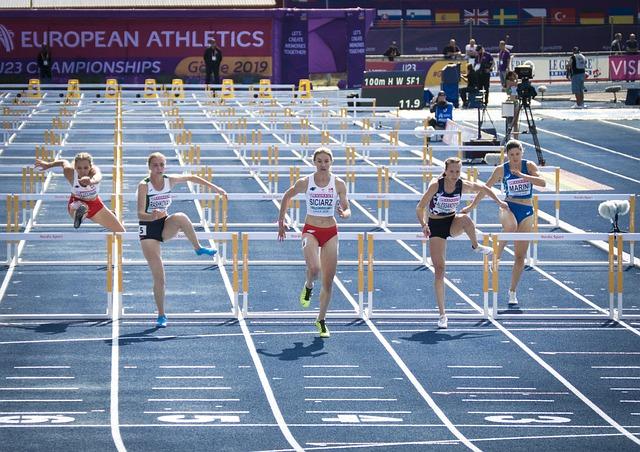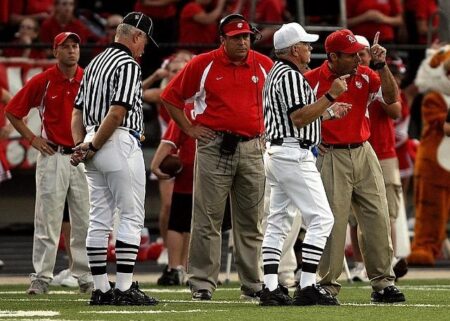California Initiates New Law to Protect Student Athletes from Extreme Heat
In a important effort to enhance the safety of young athletes, California has introduced groundbreaking legislation aimed at shielding student athletes from the dangers associated with extreme heat. As outdoor sports face increasing challenges due to rising temperatures, this law establishes essential guidelines for hydration and acclimatization practices within schools statewide. Proponents of athlete safety view this legislation as a vital measure in mitigating heat-related health issues and ensuring that student athletes can engage in their activities under safer conditions. With schools gearing up to implement these new standards, attention turns toward how this law will affect both students and educational institutions, raising crucial discussions about health protocols, preparedness, and the roles of coaches and trainers.
Legislation Outlines Requirements for Athlete Safety in Hot Weather
Considering growing concerns regarding the effects of high temperatures on young competitors, California has enacted comprehensive legislation designed to protect student athletes during periods of extreme heat. This law requires educational institutions to adopt rigorous protocols that prioritize the welfare of students participating in outdoor sports activities. Key elements include:
- Enforced Cooling intervals: Schools must schedule mandatory breaks during practices and competitions when temperatures soar.
- Temperature Monitoring: Institutions are obligated to monitor real-time temperature data to guide decisions about outdoor events.
- Coach Training Programs: Coaches are required to complete training focused on preventing heat-related illnesses and identifying symptoms such as heat exhaustion.
the new regulations also impose penalties for non-compliance while providing avenues for appealing decisions made by school officials concerning student participation during high-temperature alerts. By equipping educators with clear directives, California’s law seeks to foster a safer environment for its young athletes.A recent survey underscored the necessity for such initiatives by revealing that:
| Survey Insights | % Respondents |
|---|---|
| Youths reporting heat-related symptoms | 35% |
| Cohorts unaware of protocols regarding heat illness | 45% |
Strategies for Preventing Heat-Related Health Issues Among Young Athletes
A comprehensive approach is crucial when it comes to protecting young athletes from illnesses related to excessive heat exposure. Schools along with sports organizations should enforce strict policies mandating hydration breaks throughout practices and games so that players have consistent access to water or electrolyte-rich beverages. Moreover,it is indeed imperative that educational programs be developed targeting coaches,parents,and participants alike—these programs should focus on recognizing signs indicative of heat stress so they can act swiftly if needed.
A robust monitoring system is equally essential; it should consider variables like temperature levels, humidity rates, and duration spent outdoors during activities. Utilizing an accessible heat index chart allows coaches better decision-making capabilities regarding practice intensity based on current weather conditions; here’s an example illustrating recommended actions according to varying temperature ranges:
| Thermometer Reading (°F) | Suggested Action Plan | |||||||
|---|---|---|---|---|---|---|---|---|
| 75-80°F | No restrictions; ensure hydration breaks are available. | |||||||
| 81-90°F | Diminish activity intensity; increase break frequency.< tr >< td > 91°F + < td > Delay or cancel all outdoor engagements.< / td >
| < strong > Focus Areas For Education:< / strong > | < strong>Description:< / strong > |
|---|---|
| < Strong > understanding Heat Stress:< 1/4 - 1/4 - 1/4 - 1/4 - 1/4 - 1/4 - 1/4 - 1/4 - | The importanceofhydrationandsymptomsassociatedwithheatstress.< /tr /> |
| < Strong Preseason Readiness:< | Share effective acclimatization strategiesbeforethe season begins. | < Strong Parent Involvement:< | Encourage parental participationindiscussionsaboutheatsafetyprotocols. |
(Conclusion)
AsCalifornia adopts forward-thinking measuresaimedatensuringthehealthandsafetyofitsstudentathletes,theintroductionofthisnewlawrepresentsasignificantadvancementinaddressingtherisksposedbyextremeweatherconditions.Byestablishingmandatoryguidelineswhilepromotingawareness,certainlegislationsseektoprotectyoungcompetitorsduringtraining sessionsaswellascompetitions—ultimately prioritizingtheirwell-beingoverperformancepressures.Aseducationalinstitutionspreparetomeettheseexpectations,thislawnotonlysetsanexampleforotherstatesbutalsoemphasizestheincreasingrecognitionoftheimportanceofsafeguardingthenextgenerationofsportstalents.Movingforward,itwillbeessentialtomonitorhowthesechangesimpactyouthsportswhilecontinuouslyadvocatingpoliciesthat prioritize student welfare acrossallfacetsofcompetitive athletics.< /





